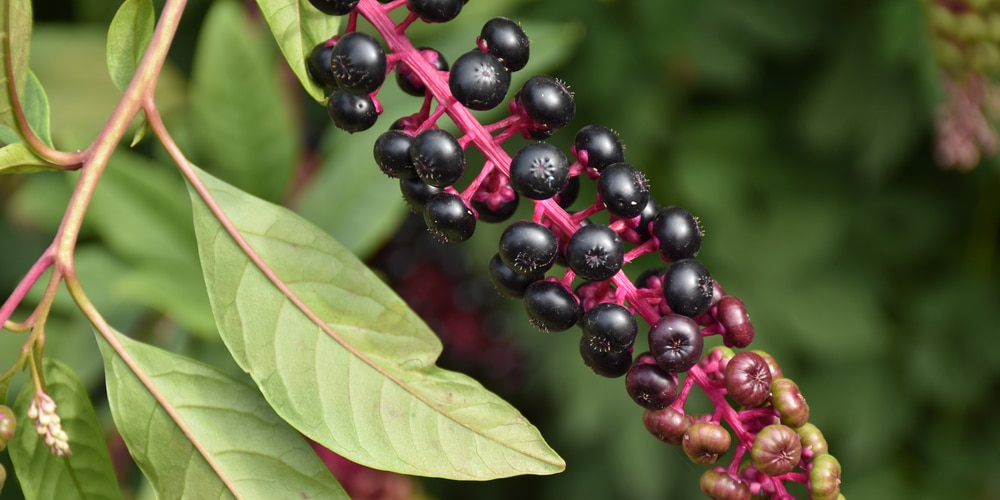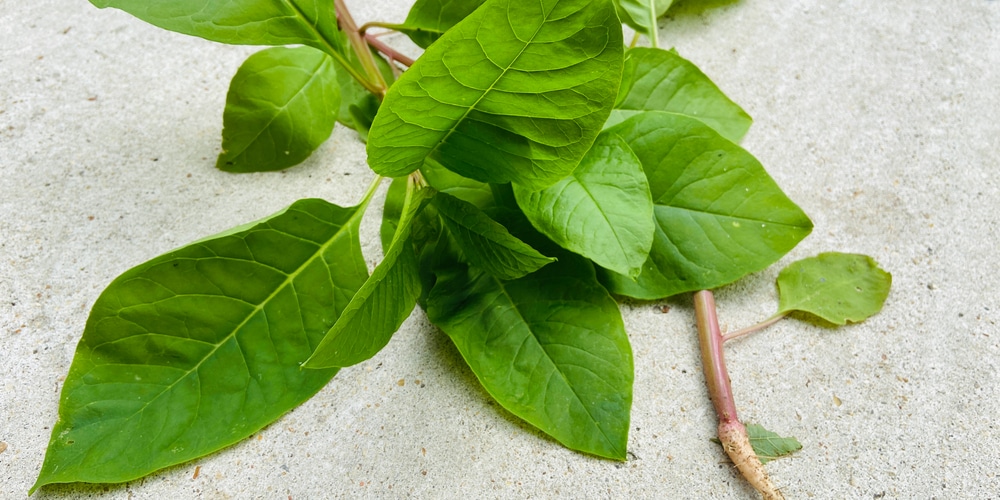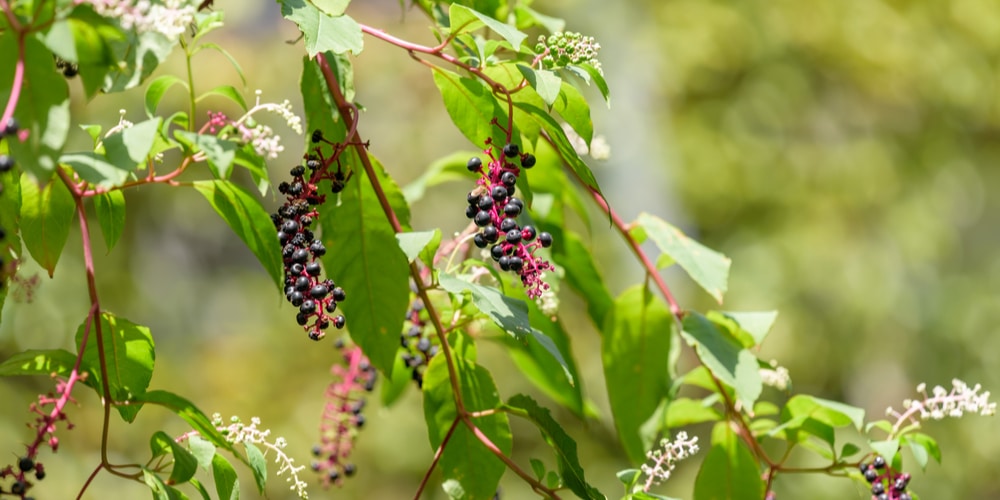Do you have pokeweed in the garden and want to get rid of it? Pokeweed is a toxic plant that can cause lots of problems if allowed to grow on your property.
Every part of this plant is considered toxic and causes serious reactions. If ingested it can even kill you. Today you are going to learn why this plant is so dangerous, and how to get rid of it.
What Is Pokeweed
Pokeweed is native to the Southern parts of the United States and has expanded to many other parts of the nation. It is a perennial weed that is a nuisance to homeowners and gardeners alike.
Pokeweed can grow up to 9 feet tall and has a burgundy trunk and stems. The leaves of the plant are bright green, and when mature the plant produces berries that are also burgundy in color.
What Makes Pokeweed So Dangerous?
As you already learned above, all parts of the pokeweed plant are toxic and can make you sick and can even kill you. The berries and sap of the plant are often thought to be the most toxic parts of the plant.
However, even the leaves of the plant can cause serious illness and death if ingested. When the skin is exposed to the sap of the plant, you can break out in a nasty rash.
Pokeweed Can Quickly Take Over the Garden
This invasive weed can quickly take over large parts of the property in a short amount of time. The plant is spread mainly by birds who feed on the berries of the plants. Pokeweed berries contain seeds that can be dispersed over large areas of land.
How To Get Rid of Pokeweed
If you have pokeweed taking over your garden, it is time to do something about it. Below you will learn two different ways to get rid of pokeweed. Each of these methods will help you rid your property of this dangerous weed.
Removing Pokeweed by Hand
Before removing pokeweed by hand, make sure that you put on the right clothing. Gloves, long pants, and a long sleeve shirt will help prevent contact with the plant.
Pull Out the Plant: Grab pokeweed by the base of the plant and pull vigorously until you have pulled it out of the ground. If done properly, you will also remove the root of the plant.
Digging Out Pokeweed: Next, you will need to take a shovel and dig around the area the plant once grew in. Search for roots that are left behind and remove them from the ground.
Safely Dispose of The Plant: Once you have removed all of the pokeweed plants from your garden, place them in the sun to dry out. Make sure to keep them away from pets and children. Once the plants have completely dried out, place them in plastic bags and put them in the trash.
Recheck The Hole for Hidden Roots: It is always a good idea to recheck the hole. Pokeweed can come back if just a few roots are left behind.
Kill Pokeweed with Weed Killer
One of the fastest ways to get rid of pokeweed is to use weed killer. While this isn’t the most eco-friendly method of removing pokeweed, it is the fastest. Some people are not physically capable of removing pokeweed by hand, and using weed killer is a great alternative. Below are some tips that will help you safely get rid of pokeweed with weed killer.
Safety First Use Protective Gear
When dealing with weed killer, you will need to wear some protective gear. You will need plastic gloves, safety goggles, jeans, and a long-sleeved shirt. This protective gear will keep your skin and eyes from coming into contact with the weed killer.
Follow Manufacturer’s Directions
Once you have your safety equipment on, carefully read the manufacturer’s directions located on the label of the bottle. It is very important that you follow these directions completely to protect your safety.
Spray Weed Killer Directly on The Plant
Spray weed killer directly on the leaves and stem of the pokeweed plant. After coating pokeweed plants, allow them to dry. Depending on the directions, you will need to wait 10 days or longer before you can remove the plants from your garden.
When the waiting period is over, you will need to pull out the plants including the roots and dispose of them properly. Never put any plant you have treated with weed killer into your compost bin. Instead, put them in plastic bags and put them in the trash.
Knowing The Signs of Pokeweed Poisoning
No matter which method of removal you use, you should always wear gloves when dealing with pokeweed. If you have come into contact with the plant, you might show signs of pokeweed poisoning. Below are a few signs that you should keep an eye out for.
Accidental Ingestion: If you accidentally ingest any part of the pokeweed plant, you should contact emergency medical services. Signs of ingestion include cramps, vomiting, and severe diarrhea. If your case is serious, you may have convulsions and respiratory failure. It can even cause death in some cases.
Skin Contact: Simply touching the pokeweed plant can cause rashes. The sap of the plant is highly irritating to the skin and should be avoided at all costs. If you do have contact with the plant, you should take a shower as soon as possible. Also, remove your clothing and wash them alone with a strong detergent.
Children and Pets: Pokeweed is especially dangerous for children and pets. Just a small amount of pokeweed can have destructive effects on small children and animals. Both children and pets can be attracted to the berries of the plant. If ingested, death can quickly occur.
How To Get Rid Of Pokeweed: Conclusion
Now that you know how to get rid of pokeweed, why not remove this dangerous plant from your garden? The longer you let pokeweed live, the more it will spread.
Taking care of the problem at the first sign of this plant will help save you a lot of time and money.
You may also like: Will Boiling Water Kill Dandelions?


